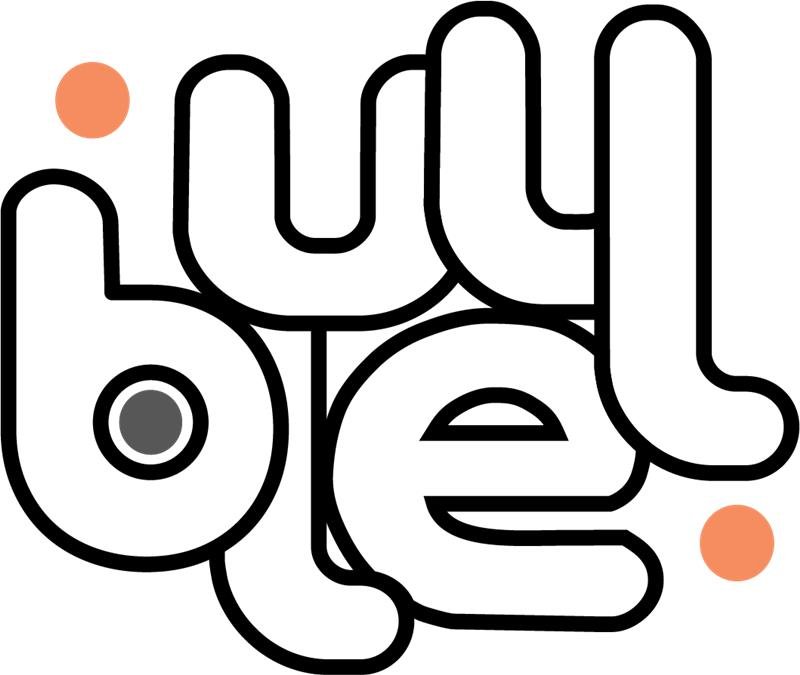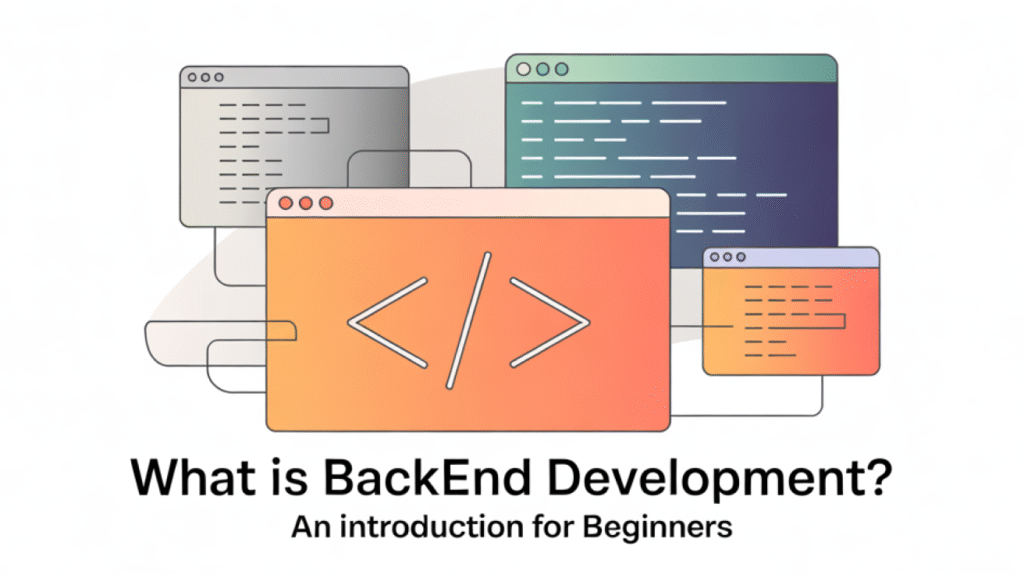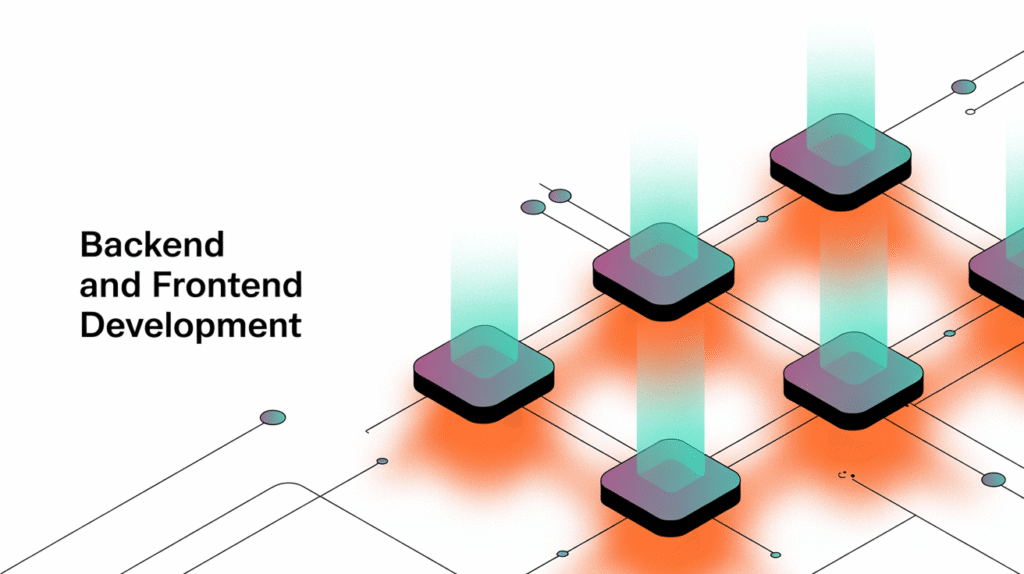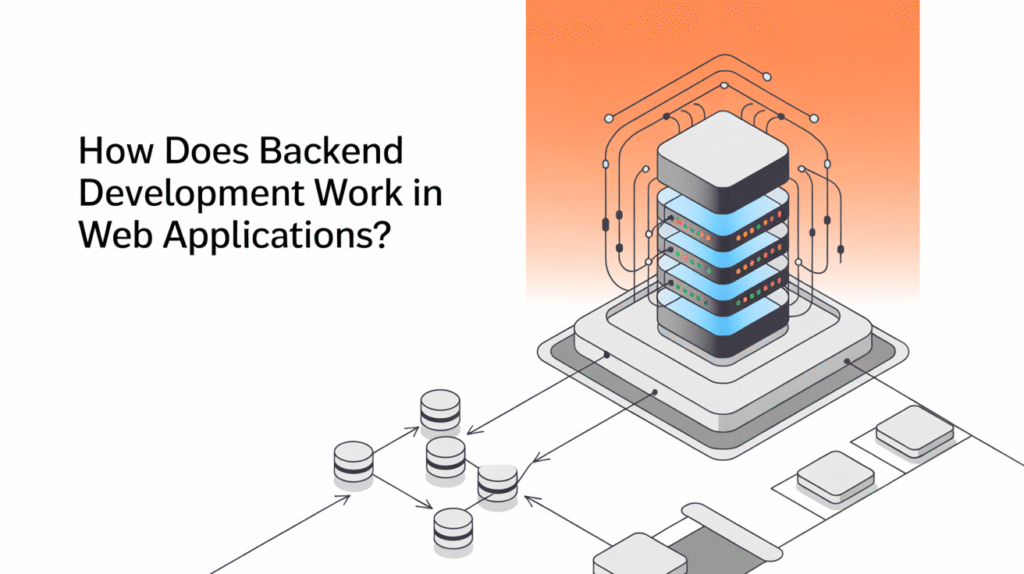- Bluell
- Blog
- Android
What does a frontend developer do?
- Development
- 9 min Read
- 19 May 2025
A front-end developer is responsible for creating the visual elements of a website or application – the parts that users interact with directly. Whether it’s layout, buttons, fonts, or animations, front-end developers ensure that the website not only looks good, but is also functional and user-friendly.
In this article, we take a deep dive into the world of front-end development, covering everything from the key responsibilities to the tools and skills needed, and even the career opportunities in this dynamic field.
Front-end developer job description
A Minimum Viable Product (MVP) is a product development methodology where a product is launched with the most basic features to quickly test an idea and address user needs. In agile product development, MVP is used to enable rapid iterations and adaptations based on user feedback.
What does MVP mean? It’s an acronym that allows companies to quickly get a product to market with minimal resources and then improve it based on user feedback.
The key components of an MVP include core functionality that solves user problems, a feedback loop to continuously improve the product, and the ability to retain early adopters. This allows companies to create an initial version of the product that both satisfies user needs and provides valuable data for further development without exceeding development costs.
Why develop an MVP?
Front-end developers focus on the “ client side ” of web development. This means transforming visual concepts into actual code that users experience when they visit websites or applications.
A frontend developer’s job includes:
- Building User Interfaces (UI) : Design and implement interactive elements, buttons, navigation bars, and the overall layout.
- Ensure responsiveness: Make sure websites are optimized for all devices, from desktops to mobile phones.
- Troubleshooting and Troubleshooting: Identify and fix issues to maintain smooth functionality and prevent problems like broken links, slow load times, and layout inconsistencies.
- Collaborate with teams: Working alongside UI/UX designers to implement designs and collaborating with backend developers to ensure the functionality and usability of web applications.
Average salary for Front-End Developers in Sweden
In Sweden, front-end developers can expect to earn an average annual salary ranging from 450,000 to 600,000 SEK . However, salaries vary depending on experience, industry, and location. Globally, salaries can range from 50,000 USD to 100,000 USD per year for entry-level to mid-level developers, while senior developers with specialized skills can earn much more.
Popular job boards in Sweden: Some of the best places to find frontend developer positions in Sweden are:
These platforms often list a variety of opportunities, ranging from startups to large companies looking for talented front-end developers.
Front-End Developer Job Outlook
The demand for front-end developers is consistently high, and this trend is expected to continue as companies increasingly rely on digital platforms.
With the ongoing digital transformation across industries, front-end development skills are essential for building user interfaces that power modern websites and applications.
As a result, the job outlook for front-end developers remains positive, offering a range of opportunities in technology companies, startups, and other industries.
Where do front-end developers work?
Front-end developers are in demand across a variety of industries, from tech startups to established companies in e-commerce, finance, healthcare, and more. Some common places front-end developers can work include:
- Technology company: Develops innovative web and mobile applications.
- Marketing agencies: Work on client websites, landing pages, and campaigns.
- Freelancing: Many front-end developers prefer the flexibility of working as independent contractors.
- Internal teams: Large companies with dedicated web development teams.
With the rise of remote work, many front-end developers also have the flexibility to work from anywhere, contributing to the global nature of the field.
How to become a frontend developer
Becoming a front-end developer means mastering the necessary programming languages, tools, and skills. Here’s a step-by-step guide to help you start your journey:
HTML, CSS and JavaScript
The core of front-end development revolves around three key technologies:
- HTML (Hypertext Markup Language) : The structure of web pages.
- CSS (Cascading Style Sheets) : Responsible for the visual design, including colors, fonts, and layout.
- JavaScript: Adds interactivity to web pages (e.g. buttons, forms, animations).
Mastering these three technologies is the first step in becoming a front-end developer.
Frames
Once you’ve learned the basics, you should dive into frameworks and libraries that help speed up development and improve code efficiency. Some popular front-end frameworks include:
- React: A JavaScript library for building dynamic user interfaces.
- Angular: A powerful JavaScript framework for creating single-page applications.
- Vue.js: A progressive framework for building modern web applications.
These tools allow developers to create complex applications with less effort and cleaner code.
Developer tools and software
The right tools can improve your productivity and make development easier. Some commonly used tools for front-end developers include:
- Version control systems: Git and GitHub help developers manage code changes and collaborate with teams.
- Text editors: Visual Studio Code and Sublime Text are popular choices for coding.
- Design tools: Tools like Figma and Adobe XD are used to create and prototype user interfaces.
Workplace skills
In addition to technical expertise, front-end developers also need a range of soft skills to thrive in a team environment. Key skills include:
- Problem Solving: Troubleshooting and solving problems is a significant part of the job.
- Communication: Front-end developers must communicate effectively with designers, back-end developers, and other team members.
- Attention to detail: Even small errors can damage a website or app, so precision is important.
Start developing your frontend developer skills
1. Learn the basics
Start with HTML, CSS, and JavaScript. Use online resources, courses, and tutorials to master these techniques.
2. Master Frameworks and Libraries
Once you’re comfortable with the basics, you can learn popular frameworks like React and Vue.js to speed up your development process.
3. Build a portfolio
Create real projects like personal websites, apps, or redesign existing websites. Your portfolio will showcase your skills to potential employers.
4. Gain practical experience
Participate in open source projects, take on internships, or freelance to gain real-world experience.
5. Stay up to date
Technology is evolving rapidly, so staying up to date is crucial. Follow industry blogs, take new courses, and explore new tools.
Real-world case studies in front-end development
1. Ecommerce website redesign
A front-end developer worked with a large e-commerce brand to revamp their user interface, improve product search functionality, and optimize the site for mobile users. After the redesign, the site saw a 30% increase in user engagement and a 15% increase in conversion rates.
2. FinTech application
Another example is a front-end developer working on a financial technology app. They integrated real-time data visualizations and intuitive dashboards, making the app more user-friendly. The result was a 20% increase in user retention as users found it easier to track their investments.
These case studies demonstrate the significant impact that front-end development can have on a company’s bottom line.
The impact of AI and automation on front-end development
The rise of artificial intelligence ( AI ) and automation is reshaping front-end development. From AI-powered design tools that generate layouts automatically to automated testing and error detection, developers can now streamline many aspects of their workflow. For example:
- AI-assisted code completion: Tools like GitHub Copilot use AI to suggest code snippets, speeding up the development process.
- Automation in testing: Tools like Selenium and Cypress allow developers to automate the process of testing websites, improving efficiency and reducing human error.
As these technologies continue to evolve, front-end developers will need to adapt and stay ahead of the curve to maintain their competitive advantage.
Career growth path for front-end developers
The career path for a front-end developer typically ranges from junior roles to senior positions. Here is an overview of the typical career progression:
1. Junior Front-End Developer ( 1–2 years )
Focus on learning HTML, CSS, and JavaScript and help build basic UI elements and layouts.
2. Mid-level front-end developer ( 2–5 years )
Start mastering frameworks like React or Angular. Start taking on more complex projects and possibly managing teams or working directly with clients.
3. Senior Front-End Developer ( 5+ years )
Lead teams, manage large projects, and possibly have a hand in the architecture and design of the front-end system. Senior developers often have expertise in multiple frameworks and technologies.
4. Lead Front-End Developer/Technology Lead
Oversee the entire front-end development team, ensure code quality, and contribute to architectural decisions.
5. Front-End Engineering Manager/CTO
Manage multiple teams, manage strategic direction, and work on high-level business decisions, such as choosing the right technology or tools.
The future of front-end development
With the emergence of new technologies such as AI, AR/VR , and Web 3.0, the front-end development landscape is changing rapidly.
Developers will be at the forefront of creating immersive and intelligent web experiences.
Whether it’s integrating AI-powered features into websites or building virtual reality websites, the possibilities are endless.
As the digital transformation continues, the need for skilled front-end developers in Sweden and globally is expected to grow exponentially.
Conclusion
Front-end development offers an exciting career path, combining creativity with technical expertise. By mastering the core skills of HTML, CSS, and JavaScript, staying up-to-date with the latest frameworks, and continuously improving your skills, you can build a rewarding career in this field.
If you want to develop your front-end development skills or need professional help, explore how Bluell’s front-end development services can help you create innovative and user-friendly websites. The future of the web is in your hands – start building it today!
Additional key takeaways:
- Stay up to date with AI and automation to improve your development process.
- Gain practical experience through real-world projects to build a robust portfolio.
- Stay adaptable as the front-end landscape evolves with new tools, frameworks, and technologies.
Table of contents
Contact us
Book a call or fill out the form below and we will get back to you once we have processed your request.




